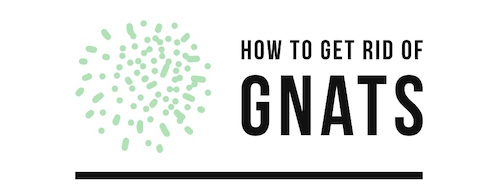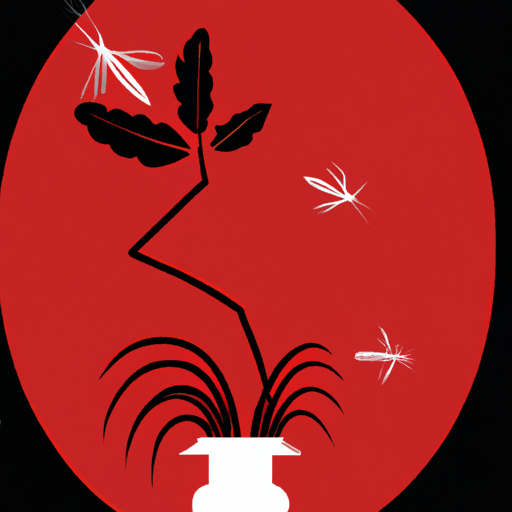How to Identify Plant Gnats and Their Damage
Plant gnats, also known as fungus gnats, are small flying insects that can be found in and around houseplants. They are typically black or dark gray in color and measure about 1/8 inch long. The larvae of plant gnats feed on the roots of plants, causing damage to the root system and stunting the growth of the plant.
Identifying plant gnats is relatively easy. Look for small black or dark gray flies hovering around your plants or flying near windowsills. You may also notice tiny white larvae crawling on top of soil or along stems near the base of your plants. These larvae will eventually turn into adult flies if left unchecked.
The damage caused by plant gnats can range from minor to severe depending on how quickly they are identified and treated. In most cases, they will cause yellowing leaves, wilting stems, stunted growth, root rot, and even death if left untreated for too long. To prevent further damage to your plants it is important to identify them early and take steps to control their population before it gets out of hand.
If you suspect that you have a problem with plant gnats in your home or garden it is important to take action immediately by removing any affected plants from other healthy ones and treating them with an insecticide specifically designed for controlling these pests such as neem oil or pyrethrin-based products available at most garden centers or online retailers specializing in pest control products . Additionally , make sure that all soil surfaces are kept dry as moist conditions encourage fungal growth which attracts these pests . Finally , ensure that all drainage holes remain clear so water does not accumulate at the base of pots .
Natural Ways to Get Rid of Plant Gnats
Plant gnats, also known as fungus gnats, are small flying insects that can be a nuisance in the home. They feed on decaying organic matter and fungi found in soil and can damage plants if left unchecked. Fortunately, there are several natural ways to get rid of plant gnats without using harsh chemicals.
One way to reduce the population of plant gnats is to allow the top layer of soil to dry out between waterings. Plant gnats thrive in moist environments so allowing the soil to dry out will make it less hospitable for them. Additionally, avoid overwatering your plants as this will create an ideal environment for them to breed and lay eggs.
Another natural way to get rid of plant gnats is by introducing beneficial nematodes into your garden or houseplant soil. These microscopic worms feed on larvae and other pests like plant gnats, helping keep their populations under control without harming beneficial insects or plants.
You can also use yellow sticky traps near your plants as a way of trapping adult plant gnats before they have a chance to lay eggs in the soil. Place these traps near windowsills or other areas where you’ve noticed an infestation and check them regularly for trapped adults which you can then dispose of properly away from your home or garden area.
Finally, adding sand or gravel over topsoil may help reduce populations by making it harder for adult female plant gnats to lay eggs in moist soils below it since they prefer loose soils with plenty of organic matter for their larvae to feed on once hatched from their eggs.
The Benefits of Beneficial Nematodes for Controlling Plant Gnats
Beneficial nematodes are a natural and effective way to control plant gnats. These microscopic worms are found in soil and feed on the larvae of many pests, including plant gnats. When applied to the soil, beneficial nematodes seek out and kill the larvae of plant gnats, providing an environmentally friendly solution for controlling these pests.
Beneficial nematodes have several advantages over chemical pesticides when it comes to controlling plant gnats. First, they are safe for use around children and pets since they pose no risk of toxicity or contamination. Second, they can be applied directly to the soil without any special equipment or protective gear; this makes them easy to use even for novice gardeners. Third, beneficial nematodes can be used in organic gardens since they do not contain any synthetic chemicals that could harm plants or pollute the environment. Finally, beneficial nematodes provide long-term protection against plant gnats since their effects last up to several weeks after application.
In addition to being an effective method of pest control, using beneficial nematodes also has other benefits for your garden’s health and productivity. Beneficial nematodes help improve soil structure by breaking down organic matter into nutrients that plants can absorb more easily; this helps promote healthy root growth which leads to stronger plants with better yields. Furthermore, beneficial nematodes also help reduce disease-causing organisms in the soil by preying on their larvae; this helps keep your garden free from diseases that could otherwise damage your crops or ornamentals.
Overall, using beneficial nematodes is a safe and effective way of controlling plant gnats while also promoting healthier soils and stronger plants in your garden or landscape beds
Common Houseplants Prone to Infestation by Plant Gnats
Plant gnats are small, flying insects that can infest houseplants and cause damage to the plants. Common houseplants prone to infestation by plant gnats include African violets, begonias, ferns, poinsettias, and ivy. Plant gnats feed on the roots of plants and can cause wilting or yellowing of leaves. They also lay eggs in the soil which hatch into larvae that feed on organic matter in the soil.
To prevent an infestation of plant gnats it is important to keep your houseplants well-watered but not overwatered as this creates a moist environment where plant gnat larvae thrive. It is also important to check for signs of an infestation such as small white flies around your plants or tiny webs near the soil surface. If you notice any signs of an infestation it is important to take action immediately by removing any affected plants from your home and disposing of them properly. You should also inspect other nearby plants for signs of an infestation and treat them accordingly if necessary. Finally, you should repot all affected plants with fresh potting mix and ensure they are kept in a dry environment going forward to prevent further outbreaks.
Tips for Preventing Plant Gnat Infestations in Your Garden
1. Keep the soil in your garden dry. Plant gnats thrive in moist soil, so it is important to keep the soil as dry as possible. Water plants only when necessary and avoid overwatering them.
2. Remove any decaying plant material from your garden regularly. Plant gnats are attracted to decaying organic matter, so it is important to remove any dead leaves or other debris from your garden on a regular basis.
3. Use yellow sticky traps near infested plants to catch adult plant gnats and reduce their population size. Place the traps near the base of affected plants and check them regularly for signs of activity; replace them when they become full or covered with dirt or dust particles that may interfere with their effectiveness.
4. Introduce beneficial nematodes into your garden soil to help control plant gnat populations naturally without using chemical pesticides or insecticides that can be harmful to other beneficial insects in your garden ecosystem such as bees and butterflies . Beneficial nematodes are microscopic worms that feed on plant-gnat larvae, helping reduce their numbers over time without harming other organisms in your garden environment .
5

